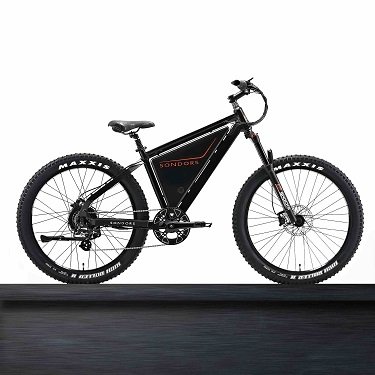Skydrive to build super cool flying car eVTOL by 2025
SkyDrive was the new edition of Cartivator
In 2012, a group of Toyota employees established the pro bono group CARTIVATOR and began work on the SD-00 shortly after. This was a scale model prototype of a flying car that the company had envisioned creating.
They successfully ran driving and hovering tests with the prototype only six months later. Still, before they could work on the real deal, they needed to scale it up first. So, the production of the SD-01 had begun, and the new group, SkyDrive, would arise.
SkyDrive was the new edition of Cartivator and would oversee the production of the SD series, such as the new SD-01 project.
Information on this new prototype is sparse, but it was a very early design with a metal frame, four wheels, two seats, a steering wheel, and four rotors.
However, tests were a success, so SkyDrive was able to raise funding, shake hands, and make friends, so they leaped into making their goal a reality.
SD-03 made its first public demonstration in 2020
Now you know the story, so let's get to the good stuff; the SD-03 and the current project being developed, the SD-XX. The SD-03 made its first public demonstration in 2020 and featured a much more commercial design than the previous prototypes.
The single-seat design resembles contemporary eVTOLs and measures around thirteen feet long and eleven feet wide.Four rotors are evenly split between each corner. Each rotor is powered by its own motor as a failsafe mechanism.
A pilot flew for four minutes around one hectare of land during the demonstration while a computer handled the flight stability and safety.
Suzuki will handle things like business and technology
At this point, SkyDrive has shaped up to be the leader of Japan's eVTOL scene, with many sponsorships such as Bandi Namco and Mitsubishi. For a future project, Suzuki has teamed up with SkyDrive for a special project that looks like it could be the SD-XX.
Suzuki will handle things like business and technology research and development and help with mass-producing SkyDrive's next project.
This means SkyDrive is left to focus on creating the best compact, two-seater eVTOL possible. Although the SD-XX is still in development, hence the placeholder name, it still boasts a much more striking image than its predecessor, the SD-03.
It adds another seat to the mix for two people to enjoy a ride in the glass-covered cabin. Because of its three wheels and land driving capabilities, it technically falls into the category of a flying car rather than an eVTOL.
This is an interesting decision considering that they are trying to balance not only a working flying machine but then make it hybrid transportation to boot. That's why many people believe that Suzuki's partnership is to help with the SD-XX and logistics.
In terms of specs, the new edition to SkyDrive's flying family doubles the number of rotors of previous prototypes to eight. It's designed to lift a maximum takeoff weight of around one thousand and one hundred pounds.
It can reach heights of up to around one thousand six hundred feet, have a max flying speed of about sixty miles per hour, and fly for approximately half an hour.
Touching down and cruising is possible, of course. You can expect max speeds to reach upwards of thirty-seven miles per hour, ranging from between twelve and eighteen miles depending on use.
Whether SkyDrive and Suzuki are aiming this product at personal consumers or air taxi services could be anyone's guess. They have stated plans for tackling entering the air taxi landscape.
Cartivator Flying Car Specs
Design: SkyDrive
Location: Tokyo, Japan
Price: TBA
Capacity: 2
Propellers: 8
Wheels: 3
Max Takeoff Weight: 1,100 lb. / 500 kg
Max Cruise Speed: 62 mph / 100 kph
Flight Time: 20-30 mins
Max Altitude: 1,640’ / 500 m
Driving Speed: 37 mph / 60 kph
Range: 12 - 18 mi / 20 - 30 km
Length: 13’ / 4 m
Width: 11’ / 3.5 m
Height: 5’ / 1.5 m
Features:
Vertical Take-off and Landing
Compact and Light
Emission Free




